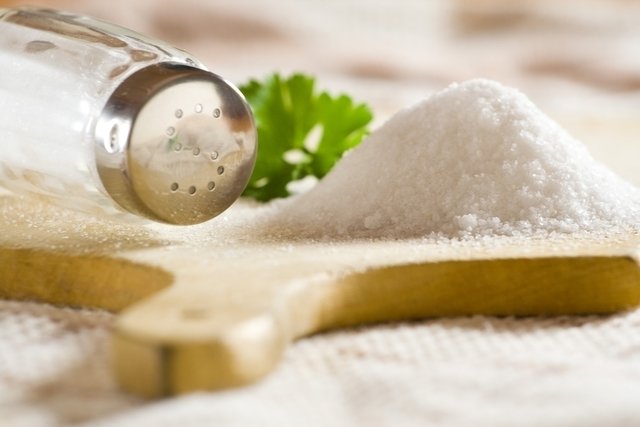Fleur de sel is a type of salt that helps balance blood pressure, facilitates the absorption of nutrients and prevents thyroid problems, because it is rich in minerals such as magnesium, sodium, iodine and potassium.
Fleur de sel contains more minerals than other types of salt, because it has no chemical additives and does not undergo any type of treatment or refinement. Discover other types of salt.
This type of salt has a crunchy texture and an intense flavor, and is generally used as a final seasoning in preparations such as chocolate, mousse, meat, fish and salads. However, fleur de sel also contains good amounts of sodium and should therefore be consumed in moderation.

Main benefits
The main benefits of fleur de sel are balancing blood pressure, helping with muscle contraction and facilitating the absorption of nutrients. This is because fleur de sel is rich in sodium, a mineral that regulates the quantity and distribution of water in the body, in addition to allowing nutrients to enter cells. Check out other benefits of sodium.
Furthermore, as it is rich in iodine, fleur de sel also acts in the formation of T3 and T4 hormones in the thyroid, helping to prevent diseases such as hyperthyroidism and goiter.
Difference between common salt and fleur de sel
Common, or table, salt goes through a refining and bleaching process, where many minerals are removed. Furthermore, this type of salt contains anti-humectant, which is a chemical additive to give it a finer, looser texture.
Fleur de sel is a type of salt that contains minerals, because it has no additives and does not undergo any type of chemical treatment or refinement.
Nutritional information table
The following table provides nutritional information for 1g, which is equivalent to a pinch of fleur de sel:
As fleur de sel has a more intense flavor, just add a small amount to preparations.
Recommended quantity
The maximum amount of salt recommended by the World Health Organization is 4 to 5g, which corresponds to approximately 1 teaspoon of fleur de sel per day.
This is because, as it contains a high sodium content, excessive consumption of fleur de sel can increase the risk of cardiovascular problems such as blood pressure, stroke or heart attack.
How to use fleur de sel
Fleur de sel can be used as a seasoning at the end of preparations, and it is recommended to avoid putting it on the fire to preserve its flavor and crunchy texture.
Thus, fleur de sel can be added at the end of preparing savory foods, such as salads, grilled meat and fish or cooked vegetables, or sweets, such as chocolate, mousse and cake.
Bibliography
- RAMOS, Jorge. Fleur de sel: How Does a Pinch of Suitable Choice Practices Value This Sustainable Natural Resource?. Resources. Vol.11. 63.ed; 1-13, 2022
- ILSI BRASIL – INTERNATIONAL LIFE SCIENCES INSTITUTE DO BRASIL. Fully Recognized Functions of Nutrients – Sodium. 2017. Available at: <https://ilsibrasil.org/wp-content/uploads/sites/9/2017/07/Fasc%C3%ADculo-S%C3%93DIO.pdf>. Accessed on April 6, 2023
- UNIRIO- FOOD AND NUTRITION SECTOR-DECTORY OF STUDENT AFFAIRS. Sal. 2020. Available at: <http://www.unirio.br/prae/nutricao-prae-1/quarentena/ Carregamento-boletins-setan/Boletim%208_%20SAL_FINAL%202.pdf>. Accessed on April 6, 2023
- WORLD HEALTH ORGANIZATION. Salt intake. Disponível em: <https://www.who.int/data/gho/indicator-metadata-registry/imr-details/3082#:~:text=A%20salt%20intake%20of%20less,much%20more%20salt%20than%20recommended.>. Acesso em 06 abr 2023

Sign up for our newsletter and stay up to date with exclusive news
that can transform your routine!
Warning: Undefined array key "title" in /home/storelat/public_html/wp-content/plugins/link-whisper-premium/templates/frontend/related-posts.php on line 12
Warning: Undefined array key "title_tag" in /home/storelat/public_html/wp-content/plugins/link-whisper-premium/templates/frontend/related-posts.php on line 13




